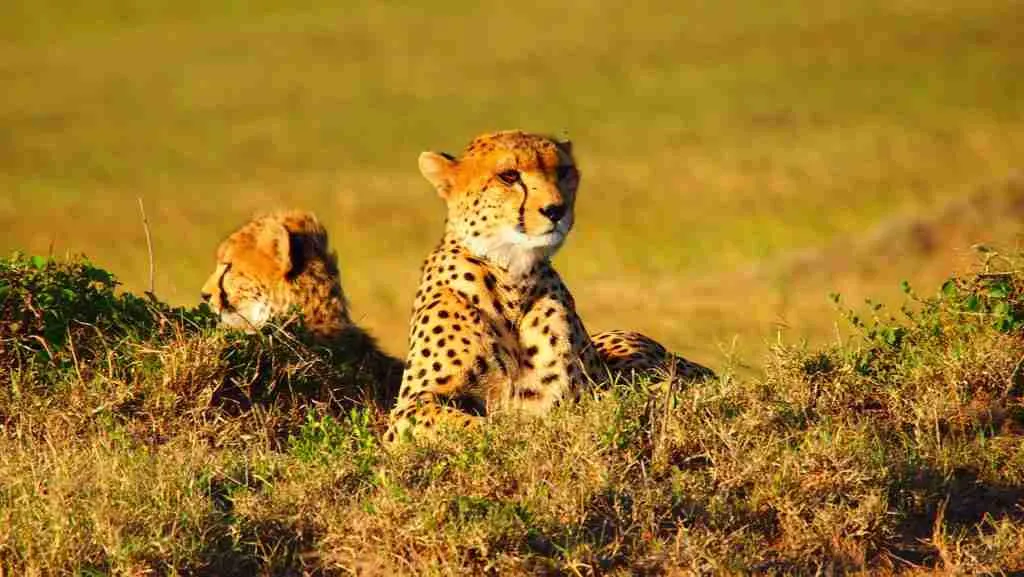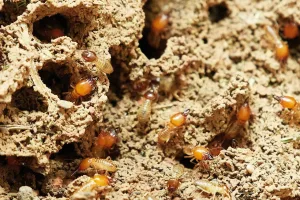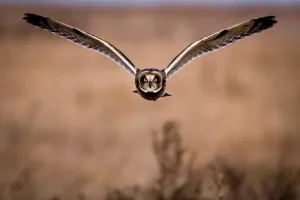22 Fun Facts About a Cheetah | Speed and Grace
-
Born with a silvery mantle that fades as they grow, cheetah cubs look quite different when young.
-
Unlike many big cats, the cheetah has relatively poor night vision.
-
Hunting mainly at dawn or dusk, the cheetah prefers daylight hours.
-
The cheetah’s claws are semi-retractable, unlike those of most other cats.
-
An 80 cm long tail helps stabilize the cheetah while running at top speed.
-
Rarely climbing trees, the cheetah’s abilities are best suited for running.
-
The cheetah’s aerodynamic body structure is built for swift sprints.
-
Small, sharp teeth allow the cheetah to grasp and hold onto its prey.
-
The distinctive black “tear streaks” on their faces reduce sun glare, helping the cheetah focus on prey.
-
During a sprint, the heart rate of a cheetah can increase to up to 250 beats per minute.
-
Capable of making sharp turns mid-sprint, the cheetah has remarkable agility.
-
Even without drinking water, a cheetah can survive by getting hydration from its prey.
-
The tail of a cheetah serves to balance its body while reaching high speeds.
-
Smaller mammals, like antelopes, are the primary diet for the cheetah in the wild.
-
Unlike other big cats, the cheetah has less muscle in its jaws.
Table of Contents
1. The cheetah is the fastest land animal.
Cheetahs are known for their incredible speed, capable of reaching speeds up to 70 mph. This makes them the fastest land animal, leaving other predators in the dust.
Their body is built for speed, with long, slender legs and a flexible spine. These features allow cheetahs to cover great distances with each stride during a chase.
2. It can reach speeds of 70 mph in short bursts.
The cheetah’s top speed is an amazing 70 mph, but it can only maintain this speed for around 200 to 300 meters. The burst of speed is often enough to capture prey quickly.
Once it reaches its top speed, the cheetah pushes its body to the limit, exhausting itself in the process. This is why it requires rest after every sprint.
3. Unlike other big cats, cheetahs cannot roar.
Unlike lions or tigers, cheetahs don’t have the ability to roar. Instead, they communicate through purring, chirping, and hissing.
These vocalizations are used to express emotions, such as contentment or distress. They also help cheetahs stay in contact with their young or fellow members.
4. They have distinctive black tear marks.
READ ALSO: 22 Fun Facts About Black Panthers | Forest’s Ghost Hunters
Cheetahs have black tear marks under their eyes that help reduce the glare from the sun. These marks give them better focus on prey while sprinting at high speeds.
The marks are also a unique feature of the cheetah’s appearance. They help distinguish the cheetah from other large cats in the wild.
5. They need to rest after every chase.
After a high-speed chase, cheetahs are typically exhausted and must rest before eating. The intense effort required for each sprint drains their energy reserves quickly.
This period of rest is crucial for recovery, allowing them to regain strength before attempting another hunt. It’s a necessary part of their hunting cycle.
6. Cheetah cubs are born with a “mantle” of fur.
When born, cheetah cubs have a long, silvery coat of fur called a “mantle.” This helps protect them by camouflaging them in the wild and keeping them safe from predators.
As they grow, the mantle fur disappears, and they develop the characteristic spots that cheetahs are known for. These spots help with camouflage when they start hunting.
7. They have unique “clawless” claws.
Unlike most big cats, cheetahs have semi-retractable claws, which remain visible at all times. These claws help them maintain traction and grip while running at incredible speeds.
This feature distinguishes them from other felines, whose claws retract when not in use. Cheetahs rely on their claws for quick acceleration and turning during hunts.
8. Cubs learn hunting techniques by playing.
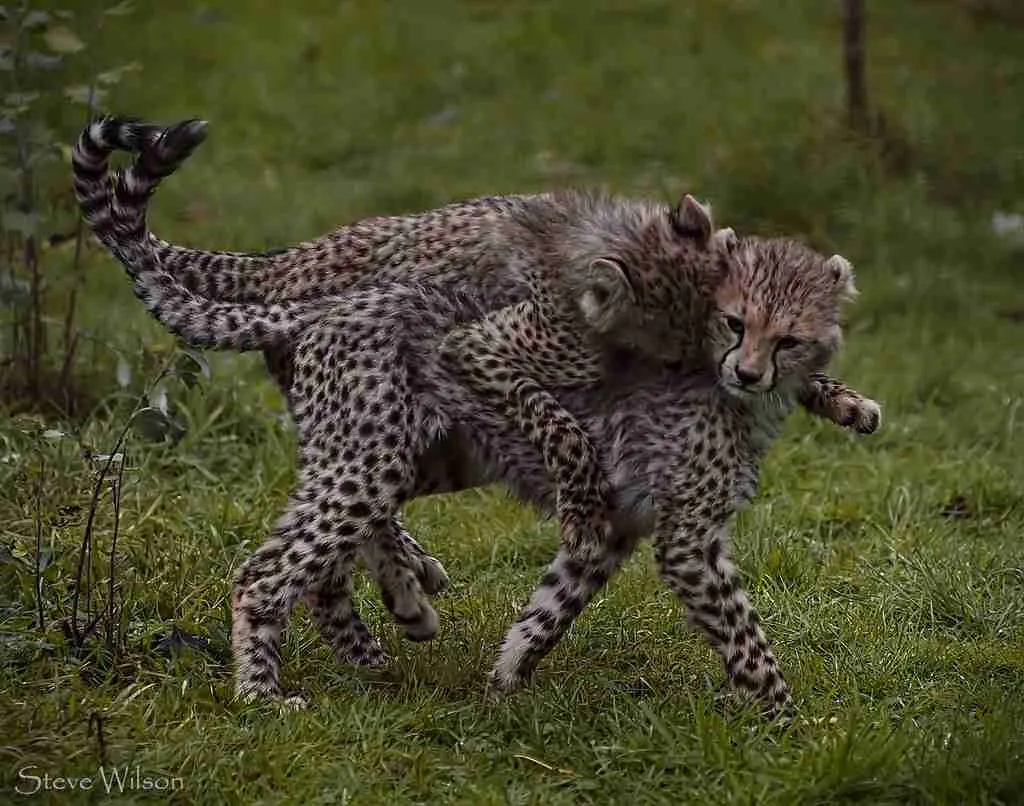
READ ALSO: 23 Fun Facts About Tigers | Nature’s Fierce Icons
Cheetah cubs start honing their hunting skills through playful activities with their siblings. From around six weeks old, these energetic youngsters engage in mock chases and pounce games, learning essential techniques.
By one year, they join their mother in real hunts, refining their skills. This playful training is crucial for their survival, transforming fun and games into life-saving abilities.
9. Their acceleration is faster than most sports cars.
A cheetah can go from 0 to 60 mph in just a few seconds, making it faster than many sports cars. This quick acceleration is essential in capturing prey on the move.
The cheetah’s muscular frame and specialized leg muscles enable such a burst of energy. It’s this ability that makes them exceptional hunters in the wild.
10. They have a small, lightweight body.
Cheetahs have a slender, lightweight body that helps them achieve extraordinary speeds. This body structure is ideal for running long distances with minimal drag.
Their small body size also allows them to maneuver quickly and change direction without losing speed. This agility gives them an advantage when chasing fast-moving prey.
11. Cheetahs have excellent eyesight.
Cheetahs have sharp vision that enables them to spot prey from over five kilometers away. This is essential for hunting in wide open spaces where other animals might go unnoticed.
Their keen eyesight allows them to pick out details in the landscape that other predators might miss. It’s a key factor in their ability to hunt effectively.
12. Cheetahs have around 2000 spots on their body.
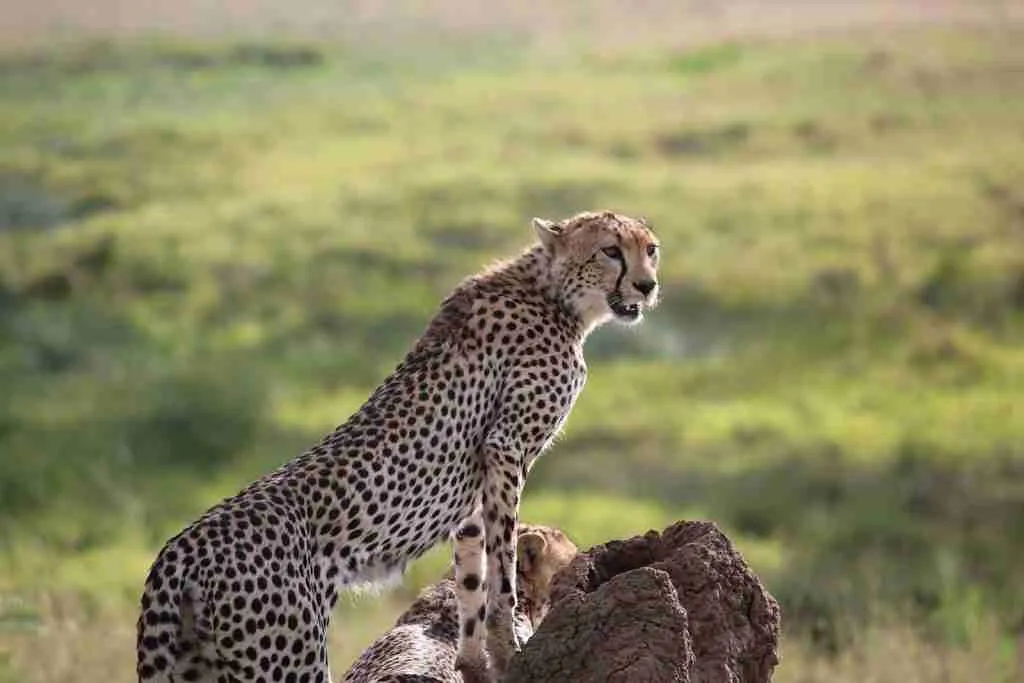
READ ALSO: 25 Fun Facts About Polar Bears | They Aren’t Truly White
Cheetahs have around 2,000 spots on their bodies. Each unique spot pattern helps them blend into their surroundings and identify one another. This natural camouflage is crucial for their stealthy hunting techniques, allowing them to stalk prey more effectively.
So, when you see a cheetah, remember that its thousands of spots are not just for show – they’re vital for survival in the wild.
13. They have non-retractable claws.
Cheetahs have non-retractable claws, unlike most other big cats. This feature provides them with superior grip and traction during high-speed chases.
The non-retractable claws allow them to maintain stability as they run, especially when turning sharp corners. It’s one of the key adaptations for their running abilities.
14. They have large nasal passages.
Cheetahs possess larger-than-usual nasal passages, which help them take in more oxygen during high-speed runs. This adaptation allows their muscles to receive the oxygen they need for explosive sprints.
By increasing the airflow to their lungs, cheetahs can sustain their sprinting performance. It’s a vital part of their survival as they chase down fast-moving prey.
15. They have a low genetic diversity.
Cheetahs have relatively low genetic diversity compared to other animals. This lack of genetic variation has caused problems, such as reduced resistance to diseases.
It also makes them more vulnerable to environmental changes, as they can’t adapt as quickly as more genetically diverse species. This is a significant challenge for cheetah populations.
16. Cheetahs can turn in mid-air while sprinting.
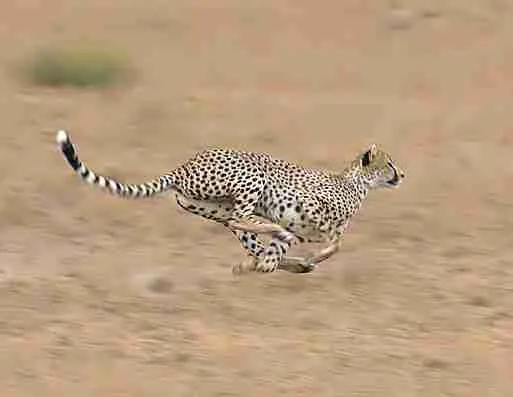
READ ALSO: 24 Interesting Facts About Bobcats: Fierce & Fuzzy
One of the interesting facts about the cheetah is its ability to turn in mid-air while sprinting. This agility is thanks to their flexible spine and long tail, which acts as a rudder for balance.
Reaching speeds of up to 70 mph, cheetahs use this unique ability to make sharp turns while chasing prey. This mid-air maneuverability gives them a remarkable advantage in the wild, making them unparalleled hunters.
17. Their spotted coat is a form of camouflage.
The cheetah’s coat is covered in small spots, which help it blend into the grass and shrubbery of its environment. This camouflage is essential for staying hidden from prey and predators.
The spots break up the outline of the cheetah’s body, making it less visible. This feature aids in the cheetah’s approach to its prey.
18. Cheetahs’ diet consists mainly of small to medium-sized ungulates.
Cheetahs primarily hunt small to medium-sized animals like gazelles, impalas, and springboks. These prey animals are fast but not fast enough to escape a cheetah’s sprint.
The size of the prey is crucial to the cheetah’s success, as larger animals would be too difficult to catch. Their hunting strategy revolves around speed, not strength.
19. They rely on their speed rather than strength to catch prey.
Cheetahs are built for speed, not brute strength. Unlike lions, who overpower their prey, cheetahs rely on their sprinting ability to capture fast-moving animals.
This method of hunting requires precision, speed, and agility rather than raw force. It makes them incredibly efficient hunters in the right conditions.
20. Cheetahs were featured in ancient Egyptian art.
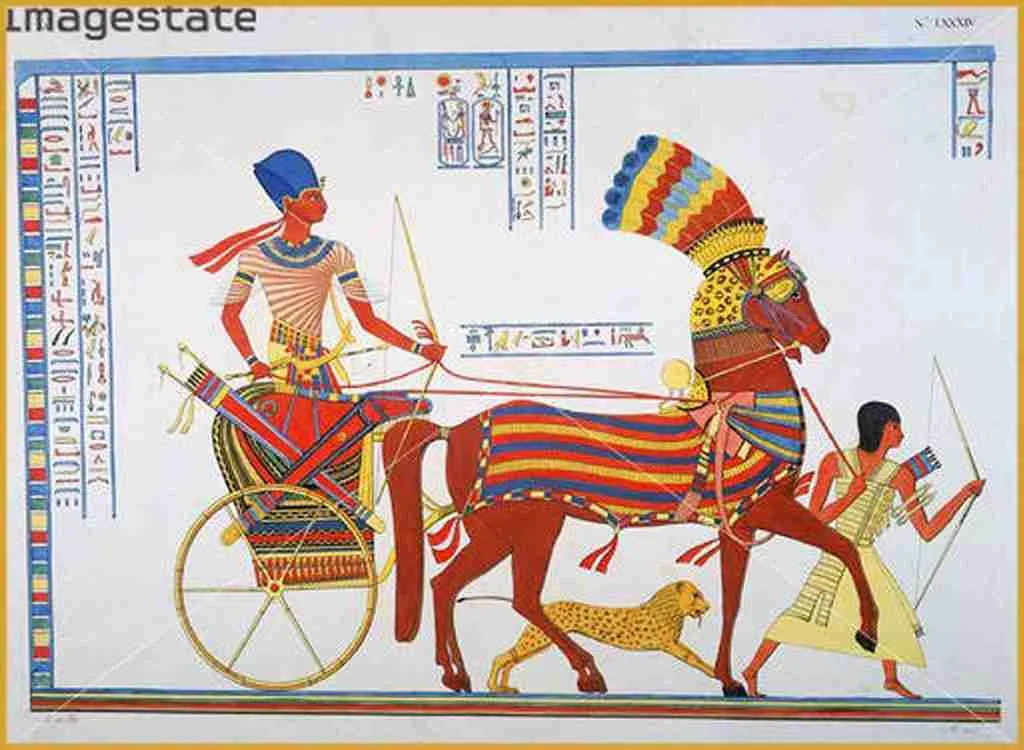
READ ALSO: Fun Facts About Cougar- America’s Largest Cat
Cheetahs have been featured prominently in ancient Egyptian art and mythology. Dating back to 2,500 BCE, they were depicted in tomb paintings and sculptures. These speedy cats symbolized royalty and elegance, often shown accompanying pharaohs during hunts.
Cheetahs were not only admired for their hunting prowess but also for their graceful beauty, making them a staple in the rich tapestry of Egyptian culture and mythology.
21. They can only sprint for about 20-30 seconds.
Despite their incredible speed, cheetahs can only sprint for about 20-30 seconds. After this, they become too tired to maintain their top speed and must rest.
This limitation makes their sprinting ability even more impressive, as they need to catch their prey within a very short time frame.
22. Their primary method of communication is body language.
Cheetahs primarily communicate through body language rather than vocalizations. Tail flicks, ear movements, and other gestures convey information to other cheetahs.
This non-vocal communication is essential for maintaining social bonds and coordinating movements, especially among mothers and their cubs.
FAQs
Cheetahs primarily live in grasslands, savannas, and open woodlands across sub-Saharan Africa, with a small population found in Iran. They thrive in areas where there is plenty of open space, allowing them to utilize their extraordinary speed to chase down prey. They tend to avoid dense forests or areas with too much cover.
Cheetahs are carnivorous predators that primarily hunt small to medium-sized herbivores such as gazelles, impalas, and springboks. They may also target smaller mammals like hares or birds when larger prey is scarce. Their diet is based on fresh kills, though they occasionally scavenge from other predators if necessary.
Cheetahs thrive in open, grassy plains, savannas, and semi-arid regions. They prefer environments with minimal tree cover, as these areas allow them to utilize their speed when hunting. Cheetahs are typically found in regions with good visibility to spot prey from afar and rely on long grass or shrubland for camouflage.
Like all mammals, cheetahs have just one heart. Their heart is specially adapted to support the immense physical demands placed on them during high-speed chases, pumping oxygen-rich blood to their muscles. This allows them to achieve the remarkable acceleration and speed that make them the fastest land animals.
In just 3 seconds, a cheetah can accelerate from 0 to 60 mph, reaching speeds that surpass most sports cars. This incredible burst of speed is one of the key factors that make cheetahs such efficient hunters in the wild. However, they can only maintain these speeds for short distances of around 200 to 300 meters.

